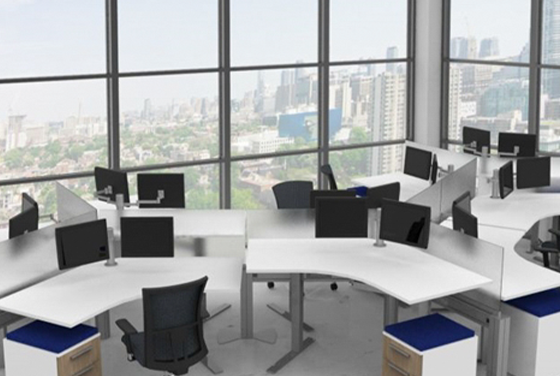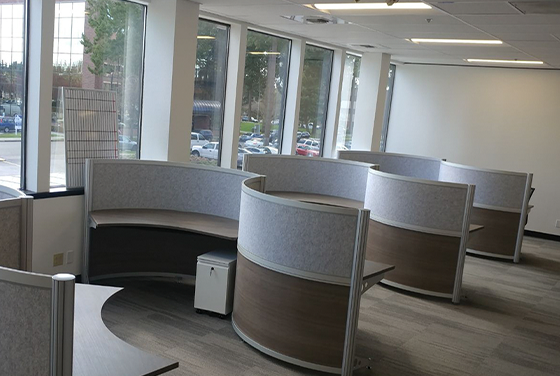
As unglamorous as it may first appear, furniture maintenance plays a very important role in the business world. Every office needs to keep office furniture in top working condition in order to maintain office productivity. If your office furniture makes your workers distracted and uncomfortable, then your workers can not perform at their best.
To avoid this, please follow these simple tips. With regular maintenance, you can keep your office furniture in top condition for years to come.
1. Routinely Service Your Office Chairs
For all the support they provide, office chairs are routinely neglected. But although a little maintenance can extend their functionality by many years, many offices won’t think to service their office chairs—even though they are by far the most complicated and customizable pieces of furniture in your workplace.
To keep your chairs in tip-top shape, make sure to tighten the screws on your office chairs twice a year. In North America, one easy way to remember this is by coordinating this biannual responsibility alongside clock changes for Daylight Savings Time. This way, office chairs with frames that have become loose from constant use will regain their solid composure.
Despite being designed to withstand heavy use, office chairs still need to be treated with care:
- Don’t lean or sit on armrests
- Don’t bang them into a low-hanging desk
- Use a vacuum to regularly clean chair upholstery
2. Protect Desk Surfaces with a Desk Pad
You’ve outfitted your office with a beautiful executive desk. It stands out with an impressive wood finish. But as much as you’d like to show off your prized possession to your guests, the first thing you should do is to cover it up with a desk pad.
While this may seem like a shame, the smart move in this situation is to immediately protect your new investment. A desk pad (or blotter) is a mat that protects your desk as you write on top of it. It guards against the scratches of your pen along with any errant ink spills that may happen. A desk pad is also very useful for organizing your desk, especially if it is oversized.
3. Use Coasters
Using a coaster is something you’d do without hesitation when putting a cup or glass on a coffee table. And yet, this courtesy is not commonly extended to the pristine tabletops of many professional workplaces.
It’s true that our jobs keep us very busy, and we are more concerned with matters that aren’t putting coasters under the coffee mugs that power our inspiration. And yet, this small act will go a long way in protecting your office furniture from perfectly preventable ring stains.
4. Invest in Chair Mats
Over the span of a single day, an employee will sit down and get up from his or her workstation dozens of times. Extended over a year, this amount will rise into the hundreds. And while it’s true that a chair never travels very far, this extended use will see the wheels of an office chair repeatedly grind into the floor below it.
To protect against constant wear and tear, invest in a chair mat. This tough piece of plastic will allow chairs to glide easier, and prevent abrasions in your wooden, tiled, or carpeted floor.
5. Clean Materials According to Their Needs
Modern office design uses all sorts of techniques to create a specific style or feeling. As aesthetically pleasing as the results are, this diversity becomes a downright hassle when it comes to cleaning furniture made from a wide range of materials.
Wood can not be cleaned the same way as leather, and any compromise will lead to uneven results. But by cleaning your office furniture according to the needs of their materials, your furniture will keep their looks and last longer.
Here’s a quick explainer on how to clean different furniture materials:
- Use a dry cloth for dusting and a damp cloth for cleaning wood veneer, laminate, or metal.
- Dust your leather furniture with a clean and soft cloth.
- Use mild cleaners like wood oil soap to clean desks with wood veneers. Dusting and cleaning spray products can leave streaks or damage the finish.
- To clean vinyl, mix a solution of warm water and mild soap to remove dirt, and dry it with a lint-free and soft cloth.
- Protect furniture made from steel or painted metal with simple dusting and mild soap.
- Desks with laminate finishes can vary in their maintenance. Ammonia-based window or multi-surface spray cleaner can be used with some laminates, but not with others. Read instructional manuals for details, or keep it simple by using a dampened cloth.
Bonus Tip: Stay Out of the Sunlight
Many new office designs feature open concepts that put an emphasis on natural light. Wide windows and skylights will bring in sunlight that will warm up your workspace, but it will also introduce negative effects as well.
Long-term sun exposure to office furniture will warp wooden desks, discolor office upholstery, and may even melt plastic materials.
By taking care of your office furniture, you’re taking care of your office’s future. Make sure your office furniture is in top condition, and you’ll be making a difference for your office!
To discover how to keep your office safe and healthy, read our guide to cleaning and disinfecting your office furniture.
fluidconcepts is an office furniture designer that sells beautiful and practical solutions to optimize your workplace. Learn more about our services by contacting us or visiting our website.



